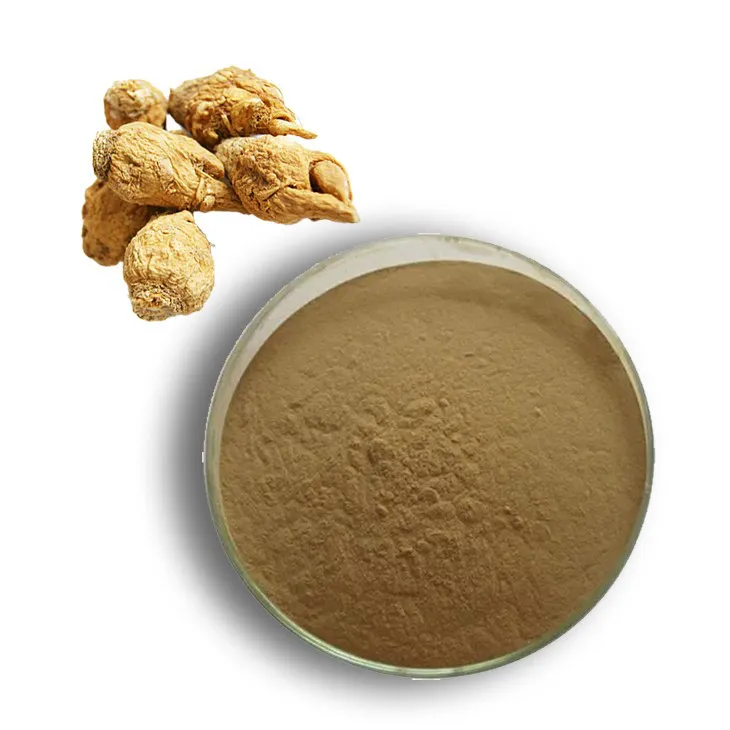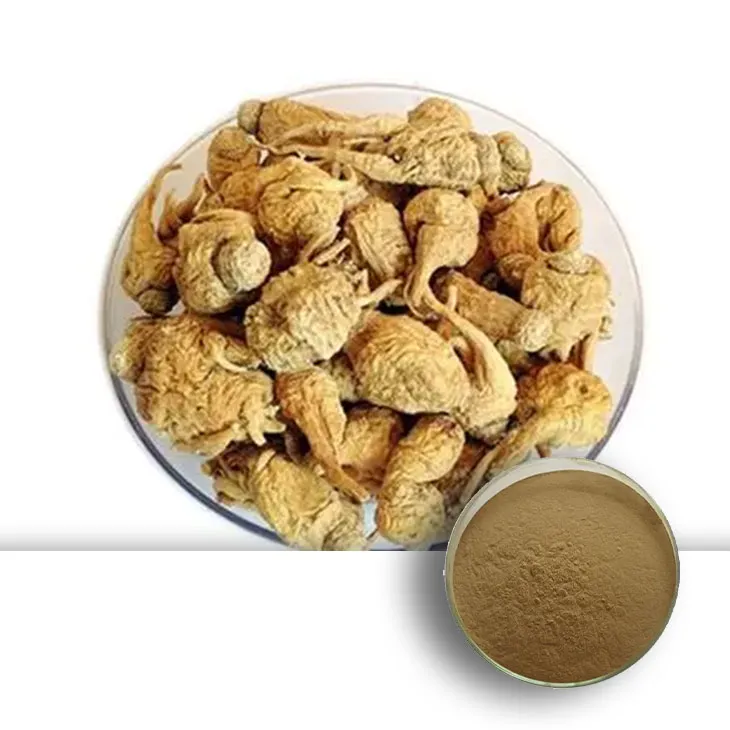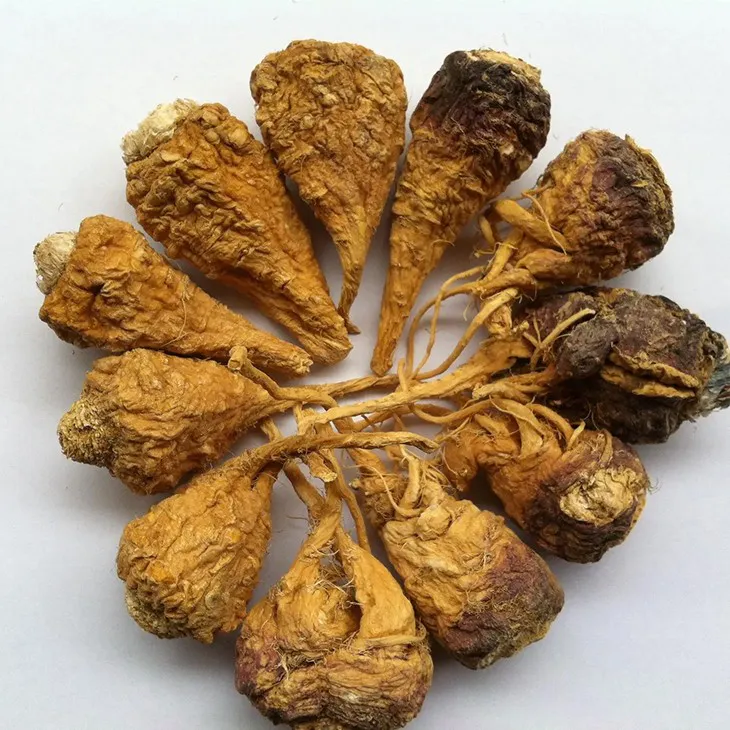- 0086-571-85302990
- sales@greenskybio.com
Extraction Technology and Production Process of Maca Extract.
2024-11-30

1. Introduction
Maca, a plant native to the high - altitude regions of Peru, has emerged as a valuable plant resource with significant potential in the health - care and pharmaceutical fields. Maca Extract, which contains a rich array of bioactive compounds, has attracted increasing attention from researchers and industries alike. Understanding the extraction technology and production process of Maca Extract is crucial for ensuring the quality and efficacy of the final product.

2. Extraction Technologies
2.1 Ultrasonic Extraction
Ultrasonic extraction is one of the most widely - used methods in the extraction of Maca Extract. This technology utilizes ultrasonic waves to enhance mass transfer during the extraction process. Ultrasonic waves create cavitation bubbles in the extraction solvent. When these bubbles collapse, they generate intense local heating, pressure, and shear forces. These forces can break the cell walls of maca more effectively, allowing the bioactive compounds to be released more easily into the solvent.
The advantages of ultrasonic extraction are numerous. Firstly, it can significantly shorten the extraction time compared to traditional extraction methods. For example, in a study comparing ultrasonic extraction with Soxhlet extraction, the ultrasonic extraction process was completed in a fraction of the time required by Soxhlet extraction. Secondly, it can improve the extraction yield. The enhanced mass transfer and cell wall disruption lead to a higher amount of bioactive compounds being extracted from the maca raw materials.
2.2 Solvent Extraction
Solvent extraction is another common method for obtaining maca extract. Different solvents can be used depending on the target compounds to be extracted. For example, ethanol is often used as a solvent due to its ability to dissolve a wide range of bioactive compounds present in maca, such as macamides and macaenes.
The process of solvent extraction involves soaking the maca raw materials in the solvent for a certain period of time. During this time, the bioactive compounds in maca gradually dissolve into the solvent. The solvent - to - raw - material ratio, extraction time, and extraction temperature are important factors that can affect the extraction efficiency. For instance, a higher solvent - to - raw - material ratio may lead to a higher extraction yield, but it also needs to be balanced considering cost and subsequent processing requirements.
2.3 Supercritical Fluid Extraction
Supercritical fluid extraction (SFE) is a relatively advanced extraction technology in the field of maca extract production. Supercritical fluids, such as supercritical carbon dioxide (CO₂), possess unique properties that make them ideal for extraction. Supercritical CO₂ has a low viscosity, high diffusivity, and can be easily adjusted to different densities by changing the pressure and temperature.
The process of supercritical fluid extraction involves pressurizing and heating carbon dioxide to its supercritical state. In this state, the supercritical CO₂ can penetrate into the maca raw materials and selectively extract the bioactive compounds. One of the major advantages of SFE is its environmental - friendliness. Since CO₂ is a non - toxic, non - flammable gas, and can be easily recycled after extraction, there is minimal environmental pollution compared to some solvent - based extraction methods.

3. Production Process
3.1 Raw Material Quality Inspection
The production of high - quality maca extract begins with strict quality inspection of maca raw materials. Maca plants should be sourced from reliable regions to ensure their authenticity and purity. During the inspection process, various parameters are examined.
- Appearance: The maca roots should have a characteristic shape, color, and texture. Any signs of mold, rot, or damage are unacceptable.
- Chemical Composition: Analytical methods such as high - performance liquid chromatography (HPLC) are used to determine the content of key bioactive compounds in maca, such as macamides and polysaccharides. Raw materials that do not meet the required chemical composition standards are rejected.
- Heavy Metal and Pesticide Residues: Tests are carried out to ensure that the maca raw materials are free from excessive heavy metal contamination (e.g., lead, mercury, cadmium) and pesticide residues. This is crucial for the safety of the final maca extract product.
3.2 Extraction Operations
Once the maca raw materials pass the quality inspection, the extraction operations can be carried out. Depending on the chosen extraction technology, different procedures are followed.
- If ultrasonic extraction is selected:
The maca raw materials are first ground into a suitable particle size. This helps to increase the surface area exposed to the ultrasonic waves and the extraction solvent. Then, the ground maca is placed in an extraction vessel along with the extraction solvent. The ultrasonic generator is turned on, and the extraction process is carried out under optimized conditions, such as a specific ultrasonic frequency, power, and extraction time.
- If solvent extraction is used:
The maca raw materials are soaked in the solvent in a sealed container. The container is placed in a controlled - temperature environment, and the mixture is stirred periodically to ensure good contact between the solvent and the raw materials. The extraction time is determined based on the nature of the solvent, the target compounds, and the extraction efficiency requirements.
- If supercritical fluid extraction is implemented:
The maca raw materials are loaded into the extraction chamber. Carbon dioxide is pressurized and heated to its supercritical state and then passed through the maca raw materials. The extraction process is carefully monitored to control the pressure, temperature, and flow rate of the supercritical CO₂ to achieve optimal extraction of the bioactive compounds.
3.3 Post - treatment Steps
After the extraction is completed, the resulting extract needs to undergo post - treatment steps to obtain the final maca extract product.
- Drying: The extract may contain a significant amount of solvent or moisture, which needs to be removed. Drying methods such as vacuum drying or spray drying can be used. Vacuum drying is suitable for heat - sensitive extracts as it can be carried out at a relatively low temperature, minimizing the degradation of bioactive compounds. Spray drying, on the other hand, can produce a fine powder form of the extract, which is convenient for further processing and formulation.
- Packaging: Once the extract is dried, it is packaged in suitable containers. The packaging materials should be chosen to protect the maca extract from moisture, light, and oxygen, which can cause degradation of the bioactive compounds over time. For example, amber - colored glass bottles or laminated aluminum foil pouches are often used for packaging maca extract.

4. Importance of Environmental - Friendly Extraction Methods
In recent years, there has been a growing emphasis on environmental - friendly extraction methods in the production of maca extract. Environmental - friendly extraction not only helps to reduce the impact on the environment but also meets the increasing consumer demand for sustainable products.
Traditional solvent - based extraction methods often use large amounts of organic solvents, which can be harmful to the environment if not properly disposed of. For example, some solvents may be volatile organic compounds (VOCs) that contribute to air pollution. In contrast, supercritical fluid extraction using CO₂ as the supercritical fluid is a much greener alternative. Since CO₂ is a natural gas, it has a negligible impact on the environment when released, and it can be easily recycled during the extraction process.
Another aspect of environmental - friendly extraction is the reduction of energy consumption. Some extraction technologies, such as ultrasonic extraction, can be optimized to reduce energy usage. By using more energy - efficient extraction methods, the overall carbon footprint of the maca extract production process can be minimized.
5. Research on New Extraction Technologies and Process Improvement
The research on new extraction technologies and the improvement of production processes are of great significance for the development of the maca extract industry.
New extraction technologies are being explored to further enhance the extraction efficiency and the quality of maca extract. For example, microwave - assisted extraction is an emerging technology that combines the use of microwave energy with traditional extraction methods. Microwave - assisted extraction can accelerate the extraction process by generating heat within the maca raw materials through microwave radiation, which in turn promotes the release of bioactive compounds.
Process improvement also focuses on optimizing existing extraction and production processes. This includes the optimization of extraction parameters such as temperature, time, and solvent - to - raw - material ratio. By fine - tuning these parameters, it is possible to increase the extraction yield, improve the quality of the extract, and reduce production costs.
In addition, the integration of different extraction technologies is another area of research. For instance, combining ultrasonic extraction with supercritical fluid extraction may take advantage of the high extraction efficiency of ultrasonic extraction and the selectivity and environmental - friendliness of supercritical fluid extraction, resulting in a more efficient and sustainable production process for maca extract.
FAQ:
What are the main extraction technologies for Maca extract?
One of the main extraction technologies for Maca extract is ultrasonic extraction. Ultrasonic waves are utilized to enhance mass transfer during the extraction process. This helps in more effectively extracting the beneficial components from Maca.
Why is strict quality inspection of Maca raw materials necessary in the production process?
Strict quality inspection of Maca raw materials is necessary because the quality of the raw materials directly affects the quality of the final Maca extract. High - quality raw materials ensure that the extract contains the desired active ingredients and is free from contaminants, which is crucial for its applications in the health - care and pharmaceutical fields.
What are the post - treatment steps in the production of Maca extract?
The post - treatment steps in the production of Maca extract include drying and packaging. Drying is important to remove moisture and preserve the extract, while packaging protects the extract from external factors such as moisture, light, and air, ensuring its stability and quality during storage and transportation.
Why are environmental - friendly extraction methods emphasized in Maca extract production?
Environmental - friendly extraction methods are emphasized in Maca extract production because they help to reduce the negative impact on the environment. These methods ensure sustainable use of Maca resources and minimize pollution, which is in line with the global trend towards environmental protection and sustainable development.
How does the research on new extraction technologies contribute to the Maca extract industry?
The research on new extraction technologies contributes to the Maca extract industry in several ways. New extraction technologies can improve the extraction efficiency, increase the yield of active ingredients, and enhance the quality of the extract. They can also lead to cost - effective production processes, which are beneficial for the competitiveness and development of the Maca extract industry.
Related literature
- “Advances in Maca Extract Extraction Technologies”
- “The Production Process of Maca Extract: A Comprehensive Review”
- “Environmental - Friendly Approaches in Maca Extract Production”
- ▶ Hesperidin
- ▶ citrus bioflavonoids
- ▶ plant extract
- ▶ lycopene
- ▶ Diosmin
- ▶ Grape seed extract
- ▶ Sea buckthorn Juice Powder
- ▶ Beetroot powder
- ▶ Hops Extract
- ▶ Artichoke Extract
- ▶ Reishi mushroom extract
- ▶ Astaxanthin
- ▶ Green Tea Extract
- ▶ Curcumin Extract
- ▶ Horse Chestnut Extract
- ▶ Other Problems
- ▶ Boswellia Serrata Extract
- ▶ Resveratrol Extract
- ▶ Marigold Extract
- ▶ Grape Leaf Extract
- ▶ blog3
- ▶ Aminolevulinic acid
- ▶ Cranberry Extract
-
The best lemon juice powder in nature.
2024-11-30
-
Organic Vitamin K2 Powder Suppliers
2024-11-30
-
Bulk purchase of L - tyrosine.
2024-11-30
-
Vitamin K2 Manufacturers
2024-11-30
-
Aguaje Extract
2024-11-30
-
Tormentil Extract
2024-11-30
-
Baicalin
2024-11-30
-
Senna Leaf Extract
2024-11-30
-
Genistein
2024-11-30
-
Red Date Extract
2024-11-30
-
Alfalfa Meal
2024-11-30
-
Konjac Powder
2024-11-30
-
Lemon Extract
2024-11-30
-
Epimedium extract powder
2024-11-30























